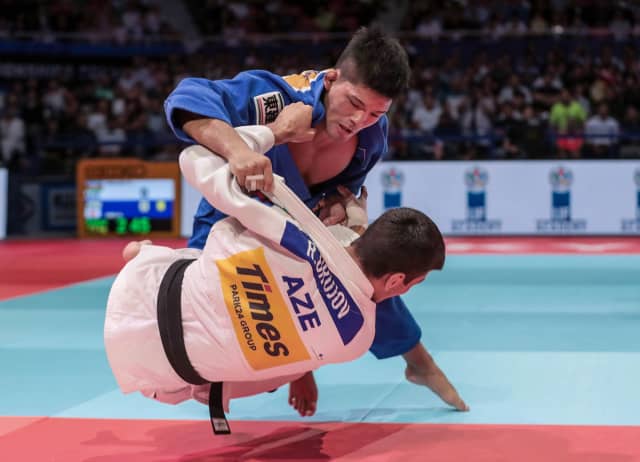For three days, we have seen stratospheric performances from many athletes. Just look at the results to find out who I'm talking about. I'll come back to it, because there is so much to say. Before that, I noticed that overall, there was a tendency to favor counter-attacks.
This is because the refereeing rules favor the actions that take place sometimes during long sequences and therefore often end in a counter-attack. This allows you to win and score, but I wonder if it is not done at the expense of the pure and punchy attack. This is a topic to follow in the months to come before the Tokyo Games next year.
But other than that, what a pleasure I had to watch some matches, especially during the second day of competition. The demonstration of the art of the judo from Tenri was breathtaking. It's almost a science. Tenri is a reference in the judo family. The athletes who have passed through this prestigious university all have a very pure judo and it is this purity that triumphs in Tokyo.
It is a very classic judo, with simple kumikata, but so effective. It is the symbol of Japanese identity and dignity. It is interesting to note that on Monday we clearly had the opposition of two judo styles. That of ABE Hifumi, which is a bit the emblem of modern Japanese judo, flamboyant and which leads to a form of presenting the athlete as a star. On the other hand, we have the judo of MARUYAMA Joshiro, which is no less flamboyant but is representing pure classicism.
Monday's semifinal was one of the most amazing matches I've seen in a long time. There was a great drama to it. I felt that things could go in favor of Abe, who was very close to destabilize his opponent, literally as well as figuratively. But little by little MARUYAMA came back into the match and he finally imposed his classic judo, with a lot of dignity, in which his emotions are shown by the posture and not necessarily by what is shown on his face. While he was injured, his face showed nothing and gradually his body and attitude found the way to victory. There was such intensity. A lot happened on Monday. This is the judo we love.
The other match that wowed me is the semi-final between Abe Uta and Majlinda Kelmendi. It is incredible that at only 19 years old, the Japanese has dominated technically, tactically as mentally her illustrious opponent. Uta has a capacity of engagement beyond norms and she is able to apply in competition, with increasing intensity, the diagram that she learned at training. It went farther, stronger and with more and more precision throughout the day.
In my opinion, these matches were above all mental battles, more than they were physical battles because all these athletes are already so much above the rest.
Before talking about this third day, I can not ignore the performance of Denis VIERU (MDA) which is another illustration of the most beautiful classic judo. It makes me think of these club judoka who have an excellent level and give the impression of permanently doing randori, with a lot of relaxation, except that he is on the podium of the World Championships. It is a small miracle for me and represents the eternity of the beautiful classic judo.
Today, I was really pleasantly surprised by Denis IARTCEV (RUS). We know he is a great judoka, but the 'sasae' he produced during the playoffs was so beautiful, very elegant.
For women, Christa DEGUCHI (CAN) showed she was a class above most of her rivals. But I liked the competition day of Sarah Leonie CYSIQUE (FRA) or Daria MEZHETSKAIA (RUS), which are raw talents who bring a lot of freshness to our sport.
And then, there is ONO, ONO, ONO, more Ono than ever, also from Tenri's school. I knew he was strong on the ground, but I had never really seen it in reality. It's confirmed now, Ono is also part of these stratospheric athletes that we have the chance to see in Tokyo.


